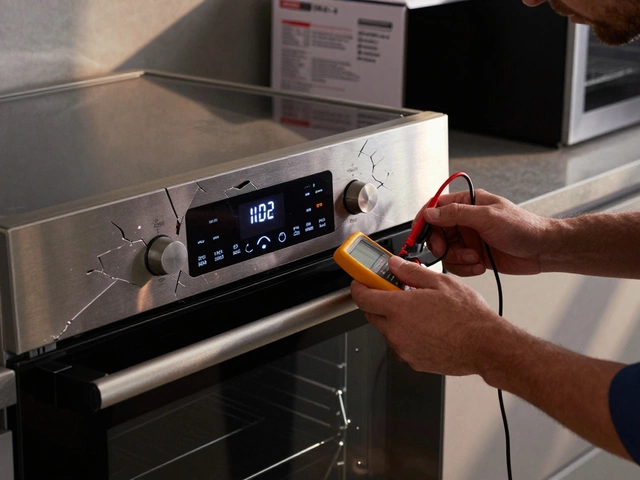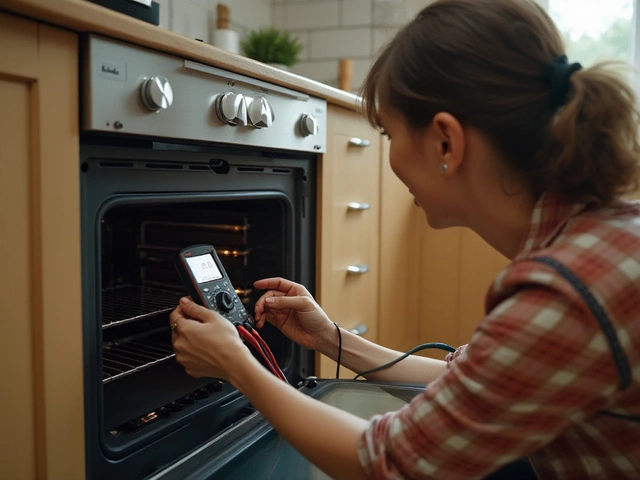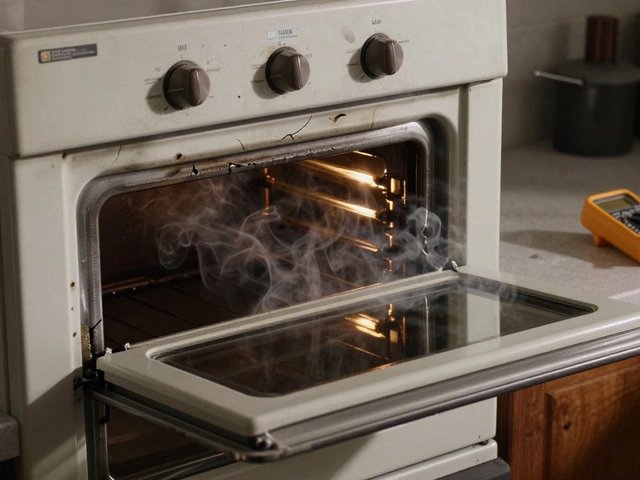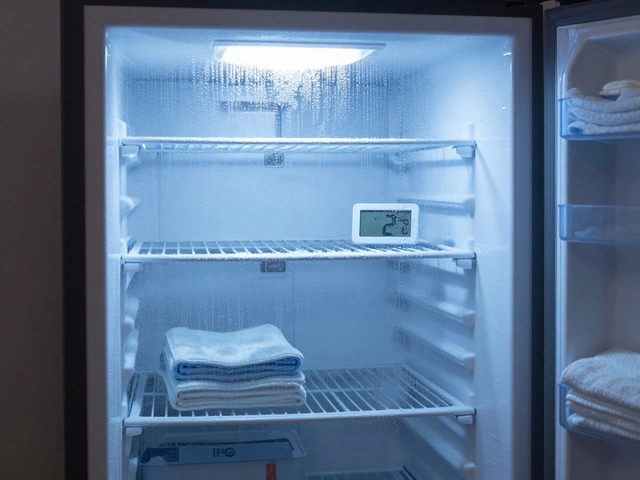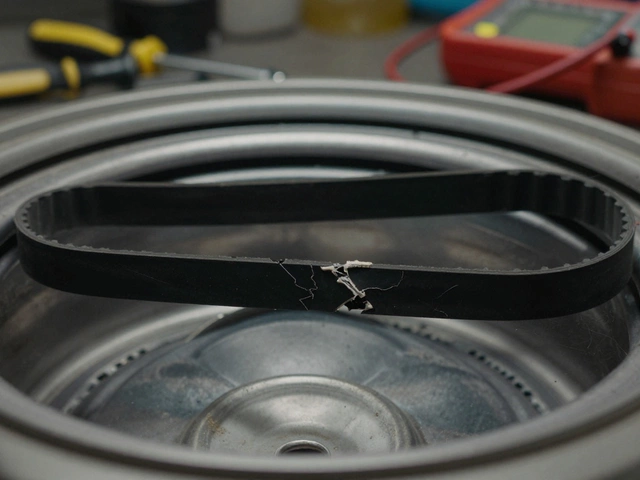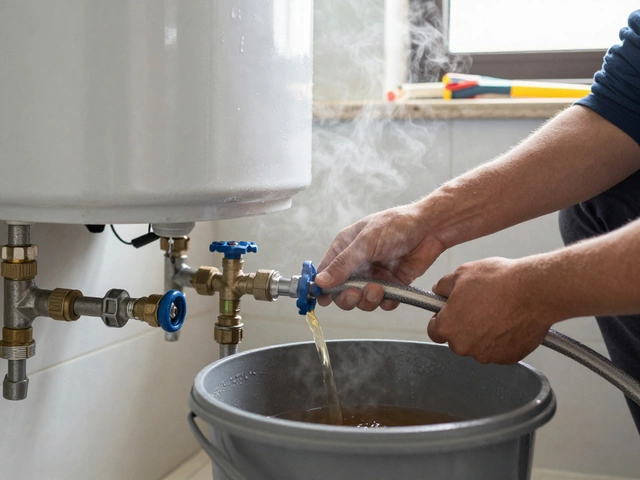So, your trusty oven is having a few hiccups, and it's been with you for eight years now. The question that pops into your head is this: Is it worth the hassle and cost to repair, or is it time to bid adieu and splash out on a shiny new model? This dilemma is more common than you might think, and the answer isn't always straightforward.
Electric ovens, much like our ever-loyal canine companions, can be unpredictable. They might perform flawlessly for a decade or demand a rescue mission after just a few years. As we navigate this culinary conundrum, it's crucial to weigh the repair costs against the benefits of a brand-new appliance. Financial wisdom often nudges us toward extending the life of what's already in our home, especially if they're still executing a decent performance.
Understanding Your Oven's Age
Electric ovens, much like many household appliances, don't come stamped with an expiration date. Still, understanding the typical lifespan of your trusty kitchen companion is crucial for making maintenance decisions. Generally, an electric oven can last anywhere from 10 to 15 years, depending significantly on how it's been used and maintained. If your oven is rounding the corner at eight years old, it's vital to consider how heavily it has been used daily. An oven that frequently roasts, broils, and bakes might exhibit more wear than one used sparingly.
One of the telltale signs that an oven is entering its golden years involves the attention it demands. Has the oven needed frequent repairs or has its performance wavered? Often, single issues starting to pile up can suggest that the appliance is gradually approaching the end of its operational life. However, if problems have been minimal, and the oven still seems to hum as it preheats, you might have a little more runway left to savor.
It's beneficial to note that certain parts of an oven age at different rates. Heating elements can become less efficient, and the digital controls might falter, especially on models equipped with modern technology. You might be curious about budgeting for these repairs—expect costs to be around $100 to $400 per fix, depending on the complexity of the task. This estimate serves as a crucial factor when weighing the decision to repair or replace.
In deciding the age viability of your oven, conducting an honest assessment is key. Consider the financial implications side-by-side with how often it's utilized. A beloved culinary workhorse, prepared daily for family meals, may merit more investment in repairs. On the other hand, a unit that's faltering, with mounting issues, might be ready for retirement. As the American Home Appliance Association notes,
"Regular maintenance and proper usage extend the lifespan of domestic appliances significantly."Insights like these guide users toward smarter caregiving and eventual replacement choices.
Common Electric Oven Issues
An 8-year-old electric oven, just like a seasoned chef, might show signs of wear and tear. As the years go by, you might notice a range of quirks and issues that can interfere with your culinary adventures. Understanding these problems is essential in deciding whether to embark on the journey of electric oven repair or to turn a new leaf by purchasing anew. One frequent issue is temperature inconsistency; your oven might develop a knack for turning your cookies into charcoal, or leaving your roast half-cooked. This often stems from a malfunctioning thermostat or a problematic temperature sensor, both of which are relatively easy fixes if caught early. Another symptom of age is a door that refuses to shut tight. A misaligned door seal can lead to heat loss, lengthening cooking times and leading to uneven results. You might find the culprit to be either a worn seal or a hinge in need of adjustment.
Another common hiccup is with the heating elements. Ovens typically rely on two elements: the lower for baking and the upper for broiling. Over the years, these elements can burn out, and when they do, your oven's performance takes a nosedive. Replacing an element is straightforward, but since it deals with electricity, safety should always come first. If flickering lights accompany your baking sessions, an electrical issue might be at play. A tripped breaker or a damaged wire could be the hidden troublemaker, and these may require professional attention to ensure safety and compliance with local electrical codes.
Speaking of codes, sometimes the digital display decides to cast a myriad of error messages instead of the expected timer countdown. These cryptic codes often signal deeper mysteries within the electronic controls, from circuit board mishaps to simple sensor glitches. While some tech-savvy individuals might find joy in diagnosing such issues, others may prefer the peace of mind that comes from an expert diagnosis. Each error code can potentially mean a different repair path, not every path leading to a happy end without skilled help.
"Attempting to repair without understanding the error codes might lead to more damage. It's like trying to solve a puzzle without seeing the picture on the box," advises Richard Blaine, a well-regarded appliance technician.
Lastly, there's the matter of strange noises. Electric ovens should run quietly, but age can bring about rattling, buzzing, or even the dreaded clanking. These sounds might be nothing more than a loose screw or could point to something critical, like an exhaust fan struggling or even the overuse of self-cleaning functions leading to damaged components.

DIY Repair Tips
In the world of electric oven repair, DIY efforts can save not just money, but often provide a sense of accomplishment. Tackling these projects might seem daunting at first, but with the right tools and information, it can actually be quite satisfying. Let's break down some practical steps you can take when dealing with common issues in an electric oven repair. Start by addressing the basics - always turn off the power supply to ensure safety. A tip from seasoned DIYers: keep your phone handy to photograph each step of dismantling your oven, ensuring easy reassembly.
A common trouble point in ovens is the heating element. This critical part can wear out over time, leading to uneven cooking. To check this, first remove the back panel to access the element. Look for signs of damage such as blistering or breaks. If discovered, a quick trip to the appliance store for a replacement might be needed. Once you have the new element, it's generally just a matter of unscrewing the old one and attaching the new one, wires and all.
"The majority of electric oven issues are due to faulty heating elements and broken temperature sensors," states energy consultant James Weston.
On the subject of temperature sensors, if your oven seems to be cooking things to charred crisps, this might be your culprit. Testing the sensor is fairly straightforward - it involves a multimeter and a bit of patience. A functioning sensor should read an average room temperature resistance level. If the reading seems off, replacing this component could restore your oven's performance. An understanding of what each part does can transform what feels like a daunting repair into something manageable.
Sometimes the problems are electronic in nature, such as keypad malfunctions or control board failures. Here, a simple reset is worth trying. Unplug the unit, wait a few minutes, and plug it back in. This basic trick can sometimes solve a surprising number of issues. If different settings are still causing hiccups, checking the manual might reveal a function you’ve overlooked. It’s not unheard of for manufacturers to include little 'reset' secrets, buried within their hefty guides!
Embarking on your journey to become a DIY maven in the appliance maintenance world might lead you to amass a handy collection of tools, but what you learn is invaluable. Tackle issues methodically and don’t hesitate to consult online communities or resources. They're filled with people who've stood in your kitchen, facing the same stubborn oven. Remember, the goal is to extend the life and performance of your appliance, making it worth every penny invested.
When to Replace Your Oven
Deciding when to replace your trusted 8-year-old electric oven can feel like tearing through a thick, cookbook recipe on a Sunday afternoon. With gadgets, age isn't just a number—it's a spectrum of changes impacting performance, cost, and safety. Generally, the lifespan of a typical electric oven ranges from 13 to 15 years. But the reality is, how well you care for it, including how often you clean it or perform small appliance maintenance, can extend or truncate its life. An 8-year-old isn't over-the-hill yet, but symptoms like uneven heating, a burnt-out fuse, or inconsistent temperature might signal a growing number of repair needs and hence, a need for retirement.
When contemplating replacing, start by calculating the cost of recurring repairs versus a new purchase. There's an economic principle called the '50% Rule'—if your repair costs are half the price of a new oven, it might be time to consider a swap. And let's not ignore the electricity bill whispering secrets about your electric oven's energy efficiency. Modern ovens boast advanced insulation and faster preheat times that could cut your utility bills significantly, wringing savings monthly.
Advancements in Technology
The world of kitchen technology doesn't stand still. The last decade saw enhancements like smart controls, Wi-Fi connectivity, and steam-cleaning options. Yes, ovens have evolved into intelligent systems that offer modern conveniences we couldn't have imagined 8 years ago. A new model might offer healthier cooking options and more consistent results with features like convection technology and precise temperature controls. Imagine controlling your oven while lounging on the couch, all with a flick on your smartphone!
"The right energy-efficient appliance ensures longevity, not just for the product but for the owner's pocket," says Alex Johnson, a leading expert on energy efficiency at the Consumer Electronics Association.
Besides the



